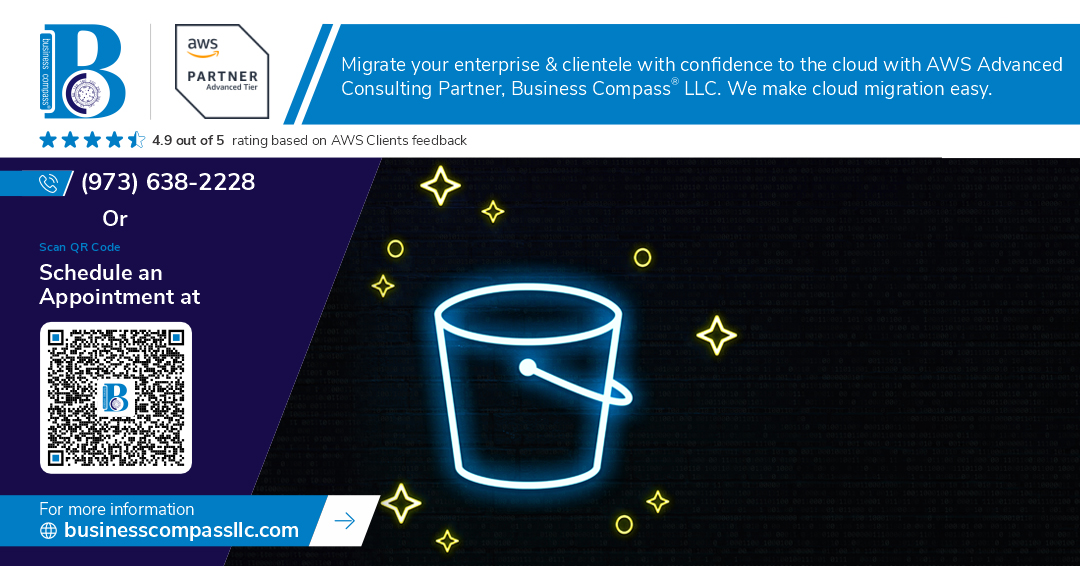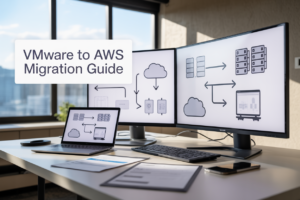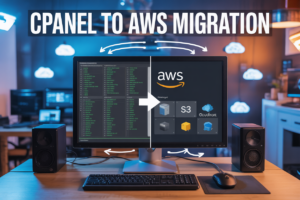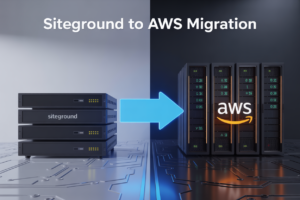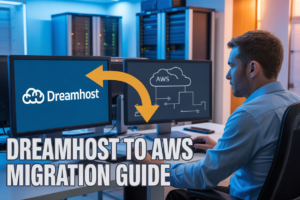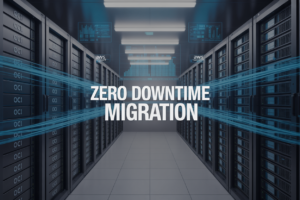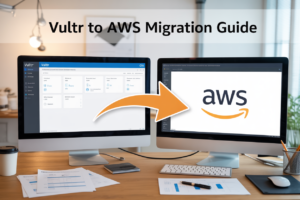Getting your AWS S3 bucket naming conventions right from the start can save you major headaches down the road. This guide walks you through AWS S3 bucket naming standards and best practices that every cloud engineer, DevOps professional, and AWS administrator needs to know.
Amazon S3 has strict S3 bucket naming rules that go beyond just character limits—your naming choices affect security, organization, and even costs. A poorly named bucket can expose sensitive data, create confusion across teams, or violate compliance requirements.
We’ll cover the essential AWS S3 naming conventions that keep your buckets compliant and secure. You’ll also learn strategic S3 bucket naming strategies that scale with your organization, from simple project buckets to complex enterprise deployments. Finally, we’ll explore common S3 bucket naming security pitfalls and how smart S3 bucket organization prevents costly mistakes before they happen.
Understanding AWS S3 Bucket Naming Requirements
Global uniqueness across all AWS accounts and regions
Every AWS S3 bucket name must be globally unique across all AWS accounts and regions worldwide. This means once someone creates a bucket called “my-company-data,” no other AWS user can use that exact name anywhere in the S3 service. This global namespace prevents naming conflicts and ensures each bucket has a distinct identity. When you attempt to create a bucket with an already-taken name, AWS will reject the request with an error message. This requirement makes choosing descriptive yet unique names challenging, especially for common business terms. Many organizations incorporate their company name, department codes, or unique identifiers into bucket names to avoid conflicts.
Character restrictions and allowed symbols
S3 bucket names follow strict character rules that directly impact your AWS S3 bucket naming conventions. Bucket names can only contain lowercase letters, numbers, hyphens, and periods. Uppercase letters, underscores, spaces, and special characters like @, #, $, or % are forbidden. Names must start and end with a letter or number – you cannot begin or end with hyphens or periods. Consecutive periods create issues and should be avoided. IP address formats like “192.168.1.1” are also prohibited. These restrictions ensure bucket names work seamlessly with DNS requirements and web URLs, since S3 buckets can be accessed through web endpoints.
Length limitations and minimum requirements
S3 bucket naming rules specify that names must be between 3 and 63 characters long. This range provides flexibility while maintaining readability and compatibility with various systems. Short names under 3 characters are rejected, while names exceeding 63 characters won’t be accepted. The length limitation stems from DNS hostname requirements, as bucket names become part of the S3 endpoint URL. When planning your S3 bucket naming standards, consider that longer names offer more descriptive power but consume more of your character budget. Finding the sweet spot between brevity and clarity becomes essential for effective bucket organization, especially in large-scale deployments with many buckets.
Case sensitivity rules and implications
AWS S3 treats bucket names as case-insensitive, meaning “MyBucket” and “mybucket” are considered identical. However, S3 automatically converts all bucket names to lowercase during creation. If you attempt to create “CompanyData,” it becomes “companydata” in the actual bucket name. This behavior affects your S3 bucket naming best practices because you must plan for lowercase-only names from the start. Mixed-case names in documentation or scripts will still work for API calls, but the actual bucket will always appear in lowercase. This rule simplifies DNS compatibility and prevents confusion that could arise from case variations of similar names.
Essential Naming Convention Guidelines
Use lowercase letters and hyphens for consistency
Stick to lowercase letters and hyphens when creating S3 bucket names. This approach prevents confusion and ensures your AWS S3 bucket naming conventions remain predictable across all environments. Mixed-case letters can create issues since S3 treats bucket names as case-sensitive, potentially leading to access errors when team members use different capitalization.
Avoid underscores and special characters
Skip underscores, periods, and special characters in your S3 bucket naming standards. These characters can cause problems with DNS resolution and make bucket names harder to read. Hyphens work better for separating words and maintain compatibility with web standards. Special characters also complicate automation scripts and can break certain integrations.
Include environment indicators for better organization
Add clear environment identifiers like “dev”, “staging”, or “prod” to your bucket names. This S3 bucket naming strategy helps teams quickly identify which environment they’re working with and prevents accidental data mixing. Place environment indicators consistently – either at the beginning or end of bucket names – so everyone on your team knows exactly where to look.
Strategic Naming Patterns for Different Use Cases
Development and Staging Environment Buckets
Environment-specific AWS S3 bucket naming conventions help teams manage resources across development lifecycles. Use prefixes like dev-, staging-, and test- followed by project names and purpose descriptors. For example: dev-ecommerce-static-assets or staging-analytics-raw-data. Include team identifiers when multiple groups work on the same project, such as dev-frontend-team-media-uploads. This approach prevents accidental cross-environment data access and simplifies automated deployment scripts.
Production Data Storage Buckets
Production S3 bucket naming strategies require careful planning to ensure reliability and clear identification. Start with prod- or production- prefixes, followed by application names and data types. Examples include prod-customer-database-backups or production-image-processing-queue. Add version numbers for schema-dependent buckets like prod-api-logs-v2. Consider business unit prefixes for large organizations: prod-marketing-campaign-assets or prod-finance-reports-archive. These naming patterns support monitoring, compliance tracking, and disaster recovery procedures.
Backup and Archival Bucket Naming
Backup and archival S3 bucket naming standards should reflect data retention policies and recovery timeframes. Use descriptive prefixes such as backup-daily-, archive-monthly-, or disaster-recovery-. Include source system identifiers and timestamp patterns: backup-daily-crm-database-YYYY-MM or archive-quarterly-audit-logs. For compliance-driven archives, add regulation codes like archive-sox-financial-records or backup-hipaa-patient-data. Cross-reference retention periods in bucket names when multiple policies apply to similar data types.
Multi-Region Deployment Naming Schemes
Multi-region S3 bucket naming schemes must account for AWS global uniqueness requirements while maintaining regional clarity. Include region codes as suffixes or infixes: company-app-logs-us-east-1 or global-cdn-assets-eu-west-1. For disaster recovery setups, use primary and secondary designations: prod-database-primary-us-west-2 and prod-database-replica-eu-central-1. Consider time zones in naming for operational clarity: logs-americas-timezone or backups-apac-region. This approach supports automated failover procedures and regional compliance requirements.
Cross-Account Access Bucket Identification
Cross-account S3 bucket naming conventions require clear ownership and access pattern identification. Include account identifiers or organizational units: shared-marketing-assets-account-123456789 or cross-team-analytics-data-hub. Use purpose-driven names that indicate sharing scope: external-partner-integration-files or vendor-data-exchange-staging. Add access level indicators like readonly-shared-reports or write-enabled-collaboration-space. Document account relationships in bucket names when multiple AWS accounts participate in data workflows, ensuring security teams can quickly identify resource ownership and intended access patterns.
Security Considerations in Bucket Naming
Avoid exposing sensitive information in names
Never include sensitive data like API keys, passwords, database credentials, or internal project codenames in your S3 bucket names. Since bucket names are globally visible and often appear in URLs, access logs, and CloudTrail events, any sensitive information becomes publicly discoverable. Stick to generic, descriptive names that reveal nothing about your internal systems or data.
Prevent subdomain takeover vulnerabilities
S3 bucket naming security extends beyond simple data protection. When you delete a bucket, its name becomes available for others to claim, creating potential subdomain takeover risks if your applications or DNS records still reference the old bucket. Malicious actors could register your former bucket name and serve harmful content. Always update DNS records and application configurations before deleting buckets, and consider using unique prefixes tied to your organization.
Consider DNS compatibility requirements
S3 bucket names must comply with DNS naming conventions since they can be accessed via virtual-hosted-style URLs. Avoid uppercase letters, underscores, and special characters that could break DNS resolution. Names should contain only lowercase letters, numbers, and hyphens, with no consecutive periods or hyphens at the beginning or end. This DNS compatibility ensures your buckets work seamlessly across all AWS services and third-party integrations.
Organizational Best Practices for Large-Scale Deployments
Implement consistent naming hierarchies across teams
Creating structured AWS S3 bucket naming conventions across enterprise teams prevents chaos and improves resource management. Establish clear hierarchical patterns like company-environment-team-project-purpose to ensure every bucket follows the same logical structure, making it easier for developers and administrators to locate and manage resources across different departments and projects.
Use prefixes for department and project identification
Department-specific prefixes streamline bucket identification and access management. Marketing teams might use mkt-, engineering could adopt eng-, and finance uses fin- as standard prefixes. Combine these with project codes like mkt-website-prod or eng-ml-training-dev to create immediately recognizable bucket names that clearly indicate ownership and purpose without requiring additional documentation or context.
Include version control indicators when needed
Version indicators become critical when managing multiple iterations of applications or data sets. Incorporate versioning patterns like v1, v2, or date stamps 2024-01, 2024-02 in bucket names for projects requiring historical data retention or rollback capabilities. This practice helps teams track deployments and maintain parallel environments while avoiding conflicts between different application versions.
Document naming standards for team compliance
Written documentation ensures consistent AWS S3 bucket naming standards across all team members and new hires. Create comprehensive naming guides that include approved prefixes, forbidden characters, length limitations, and real-world examples for different scenarios. Regular training sessions and automated validation tools help enforce these standards, reducing naming conflicts and improving overall S3 bucket organization in large-scale deployments.
Common Naming Mistakes to Avoid
Using IP address formats that cause conflicts
Never name your S3 buckets using IP address patterns like “192-168-1-100” or “10.0.0.1-backup”. AWS treats these as potential conflicts with actual network endpoints, which can create routing confusion and deployment headaches. Your bucket might work fine initially but fail spectacularly when integrated with VPCs or CDN configurations.
Creating names that resemble AWS service endpoints
Avoid bucket names that mirror AWS service patterns such as “s3-us-east-1-data” or “ec2-logs-production”. These naming choices confuse both humans and automated tools, making troubleshooting a nightmare. When your monitoring systems can’t distinguish between actual AWS endpoints and your custom buckets, you’re setting yourself up for operational chaos during critical incidents.
Ignoring future scalability in naming decisions
Many developers create buckets like “app-data” or “company-files” without considering growth. When you need regional replicas, environment-specific versions, or team-based segregation later, you’ll face painful migration processes. Smart AWS S3 bucket naming conventions include environment prefixes, region indicators, and purpose identifiers from day one. Plan for multiple teams, regions, and use cases even if you’re starting small.
Following proper S3 bucket naming standards isn’t just about meeting AWS requirements—it’s about building a foundation for scalable, secure, and manageable cloud infrastructure. The naming conventions you establish today will either support your organization’s growth or create headaches down the road. Smart naming patterns, security-focused approaches, and consistent organizational standards help teams collaborate better and reduce costly mistakes.
Take the time now to develop and document your bucket naming strategy. Start with your current projects and gradually apply these best practices across your AWS environment. Your future self and your team will thank you when troubleshooting issues, managing permissions, or onboarding new developers becomes straightforward instead of a puzzle-solving exercise.










